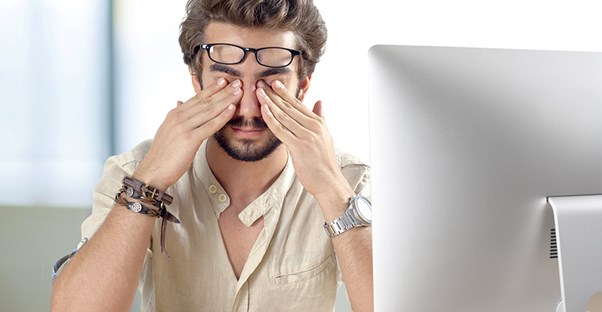Styes are small pimple-like bumps on eyelids. They can be caused by a bacterial infection of the eyelid follicles or of the glands located around the eyelids and lashes. Additionally, the ducts that deliver the oily substances produced by these glands can become blocked, and this can also cause a stye. Here’s a look at the signs and symptoms of a stye.
Types of Styes
There are two types of styes, for which the medical term is “hordeolum.” The meibomian gland is a sebaceous gland that produces a thin, oily substance that helps keep tears from evaporating off the eye. It is located on the more internal edge of the eyelid, and so an infected meibomian gland causes an internal stye. External styes are the result of an infection and/or blockage of an eyelash follicle, the sebaceous glands of Zei (which secrete a sebum onto the eyelashes), or Moll’s glands (a type of sweat gland).
Stye Symptoms
Styes are small, red bumps. They form on the the edges of the eyelids. They are often described as looking like zits or boils, and a white head may form on them as pressure and pus build up inside. The area surrounding them may appear reddish and warmer than normal to the touch. The eyelid itself may be painful and swollen. You may notice your eye tears up more than normal. It is possible for a stye to interfere with your sight, causing blurry vision or even going so far as to cause corneal astigmatism.
Styes vs. Chalazion
Styes are often confused with chalazion (pronounced kuh-LAY-zee-uhn), which is also a small red bump that appears on the eyelid. The biggest difference in these two problems is that a chalazion is not because of an infection, but is only the result of a blocked sebaceous gland. Symptomatically, the biggest difference is that while a stye is quite painful, chalazia are not. Additionally, chalazia can form further from the edge than a stye normally does.
Potential Stye Complications
There are a few complications that can result from the presence of a stye. A chalazion can form if the stye has been present for a considerable length of time. Generally, when a stye is caused by a blocked duct, a chalazion is more likely to develop, as they are not because of infection.
When the stye is caused by infection, it can lead to cellulitis in the nearby tissue. Periorbital (around the eye socket) cellulitis, also called preseptal cellulitis, is an infection of both the eyelid and the nearby soft tissue. The eye may become red, swollen, and watery as the bacteria that caused the stye begins to spread into the surrounding area. Eventually, this bacteria can spread even further, causing infections farther back into the head and in the sinus cavities. If your stye isn’t getting better within a few days, begins to get worse, or the redness begins to swell onto a larger area of the eye, see your doctor as soon as possible.




